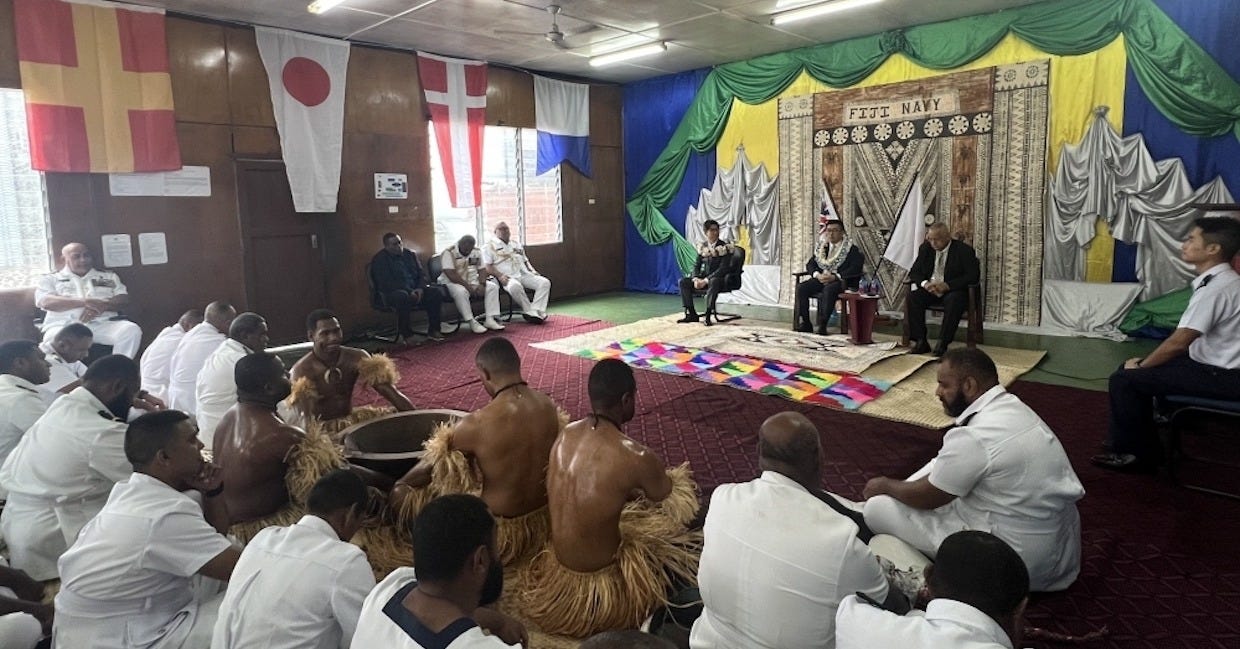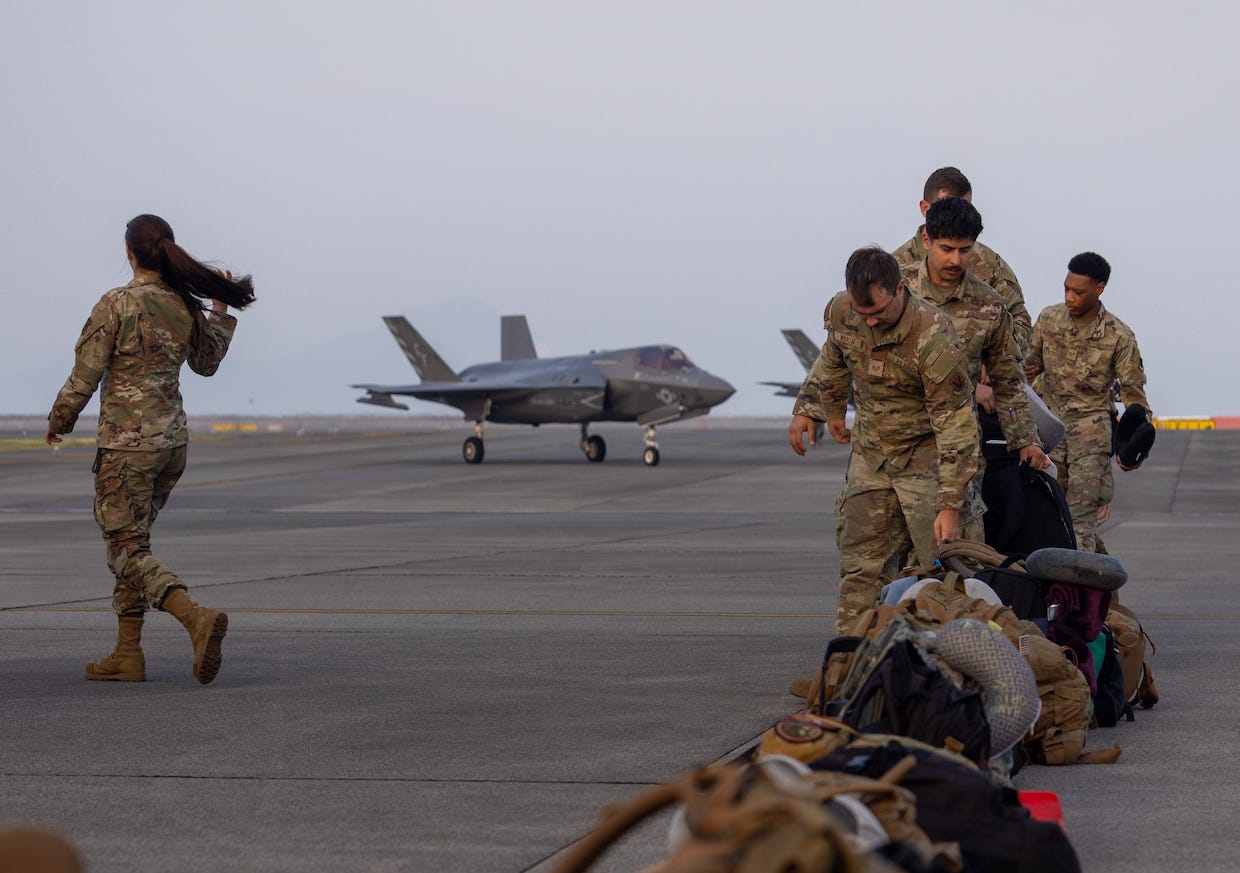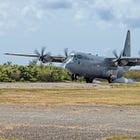US and allies bring new gear and big drills to the Pacific
Japan is stepping up its overseas security assistance. Plus, two major US-led military exercises kick off.

Japan’s new Official Security Assistance program quietly grows.
US, Australia, and 17 other militaries gather for this year’s record-setting Talisman Sabre exercise.
US Air Force units converge in the Pacific for training they haven’t done in decades.
Last week, I wrote for The Diplomat about Japan’s Official Security Assistance (OSA) program. A complement to Japan’s Official Development Assistance program, OSA provides aid directly to the militaries of “like-minded countries,” and it has grown considerably since it began in 2023.
Tokyo allotted $56 million for OSA in 2025, quadruple the 2023 amount, and plans to give grants to eight countries, double the number in 2023 and 2024. Japanese media reported in June that candidates for 2025 grants were Indonesia, Malaysia, and the Philippines, which have gotten them before (Manila in both years), and Papua New Guinea, Sri Lanka, Thailand, Timor-Leste, and Tonga.
The material Tokyo has so far agreed to provide is oriented toward capacity-building. Some of it, like the water rescue training doll that Fiji received in May, will help partners with training, while other assets, like patrol boats and air and maritime radars, will help them monitor their sea and airspace.
OSA is a new chapter in Tokyo’s overseas assistance, but it also illustrates a broader shift in Japanese foreign policy.
The nature of that material and the location of the recipients — all of them are near major sea lanes — reflect Japan’s desire to bolster stability in what it sees as a deteriorating security environment, especially in Southeast Asia. Tokyo is also trying to offer another option for security assistance to countries that feel caught in the intensifying US-China competition.
Overall, Tokyo’s goal is to keep relations with the US good, avoid alienating China, and “provide this sort of center away for countries that don't want to have to choose” between the superpowers, Robert Ward, Japan chair at the International Institute for Strategic Studies, told me last month.
Read the story at The Diplomat here.
Sabre rattling
This week saw the start of the biennial exercise Talisman Sabre in Australia. It began as a US-Australia exercise in 2005 but has expanded dramatically, with 35,000 troops from 19 countries taking part this year, making it “unprecedented scale in both geography and participating nations,” according to the US Army.
The exercise kicked off on July 13 with an official ceremony in Sydney and will go until August 4. Drills will be held across Australia and as far west as Christmas Island, an Australian territory about 300 miles south of Jakarta, as well as in Papua New Guinea, the first time part of the exercise has been held outside of Australia.
Talisman Sabre typically involves training on land, at sea, in the air, and in the cyber and space domains. A notable addition this year is the British aircraft HMS Prince of Wales and its multinational strike group, which are on an eight-month deployment to the region. As in past years, there will be an emphasis on expeditionary operations; as part of that, US and Australian troops will practice seizing airfields, setting up remote bases, and controlling airspace in Australia’s Northern Territory.

The US Army said this year’s exercise “represents the most complex Talisman Sabre iteration ever conducted,” and it has topped records for number of participants that were set at the most recent edition. That growth is part of a broader US effort to increase the size and complexity of its exercises in the Indo-Pacific, which is meant to improve the US military’s own capabilities but is also a response to militaries in the region that want to strengthen their forces amid rising tensions. Australia, for example, is not only deepening training with other countries — such as by swapping F-35s with Japan — but also investing heavily in long-range weapons, including the US-made HIMARS rocket artillery.
Canberra ordered 42 HIMARS in 2023 and received the first of them in March. Australian soldiers fired them for the first time on the first day of Talisman Sabre, launching dozens of rockets alongside US and Singaporean HIMARS units at the Shoalwater Bay Training Area in Queensland. The drill included an F-35 fly-by and loudspeakers playing “Thunderstruck” by AC/DC, according to Stars and Stripes.
Brig. Gen. Nicholas Wilson, commander of the brigade fielding the HIMARS, said the weapon extends the Australian army’s strike range, allowing it to hit long-range targets on land and at sea. Lt. Gen. Simon Stuart, chief of the Australian army, said the HIMARS firing and other drills would show how the army is transforming to operate better across the region’s unique geography.
“Talisman Sabre would demonstrate to the nation, the region and Australia's partners that the Australian Army’s future was fighting on the beaches, rivers, coastal waters and archipelagos of the Indo-Pacific,” Stuart said, according to a press release.'
‘Fight under attack’
As Talisman Sabre began, another unique exercise, Resolute Force Pacific, was getting underway. REFORPAC began on July 10 and is part of a “first-in-a-generation” Department-Level Exercise series that started on July 8 and involves Air Force and Space Force units in the US and across the Indo-Pacific.
The Air Force says REFORPAC, which runs until August 8, will involve more than 300 aircraft and is “the largest contingency response exercise” it has ever done in the Indo-Pacific. Its name is reminiscent of the Cold War-era Return of Forces to Germany, or REFORGER, exercise, which practiced surging forces to West Germany in response to a Soviet threat. REFORPAC is similarly meant to simulate surging forces to the Pacific and sustaining operations in the face of attacks.
Gen. Kevin Schneider, commander of US Pacific Air Forces, told me in an interview last year that supply lines and command-and-control were two areas of focus for his command’s exercises in 2025 because of “the ranges and the sheer magnitude of the theater in which we operate as well as dealing with logistics and sustainment in a highly contested [anti-access/area-denial] environment.” REFORPAC will focus on skills related to those areas, in addition to command-and-control at scale, which requires coordination among airmen, other US military units, and other militaries.
“We must be ready to operate in austere conditions, with degraded networks, and through disruptions to sustainment chains. Our forces must be self-sufficient, mobile, and capable of rapid adaptation,” Schneider said in a recent press release. “The exercise conditions during REFORPAC will require Airmen to move fast, fight under attack, and sustain combat operations in ways we haven’t done in decades.”

Units involved in REFORPAC will also support other exercises in the region. “We’re rolling it in with Talisman Sabre, because we understand we’re going to fight with allies and partners” and linking them creates “more of an international exercise,” the Air Force’s top officer said last year.
US commanders rarely name China as a threat when discussing exercises, in part out of consideration for allies in the region who are wary of how Beijing might react. But Chinese commentators are quick to condemn what they see as a US-led effort to contain China — and to highlight potential fissures between Washington and its allies.
“Both REFORPAC and Talisman Sabre demonstrate that the US military is practicing and testing new, targeted operational concepts. It is worth noting that although the US is trying to rally its allies to create an appearance of strength in numbers, most of the countries participating in these exercises are actually reluctant to be bound to Washington's military agenda,” one commentator said in an article on the Chinese military’s English-language website.








